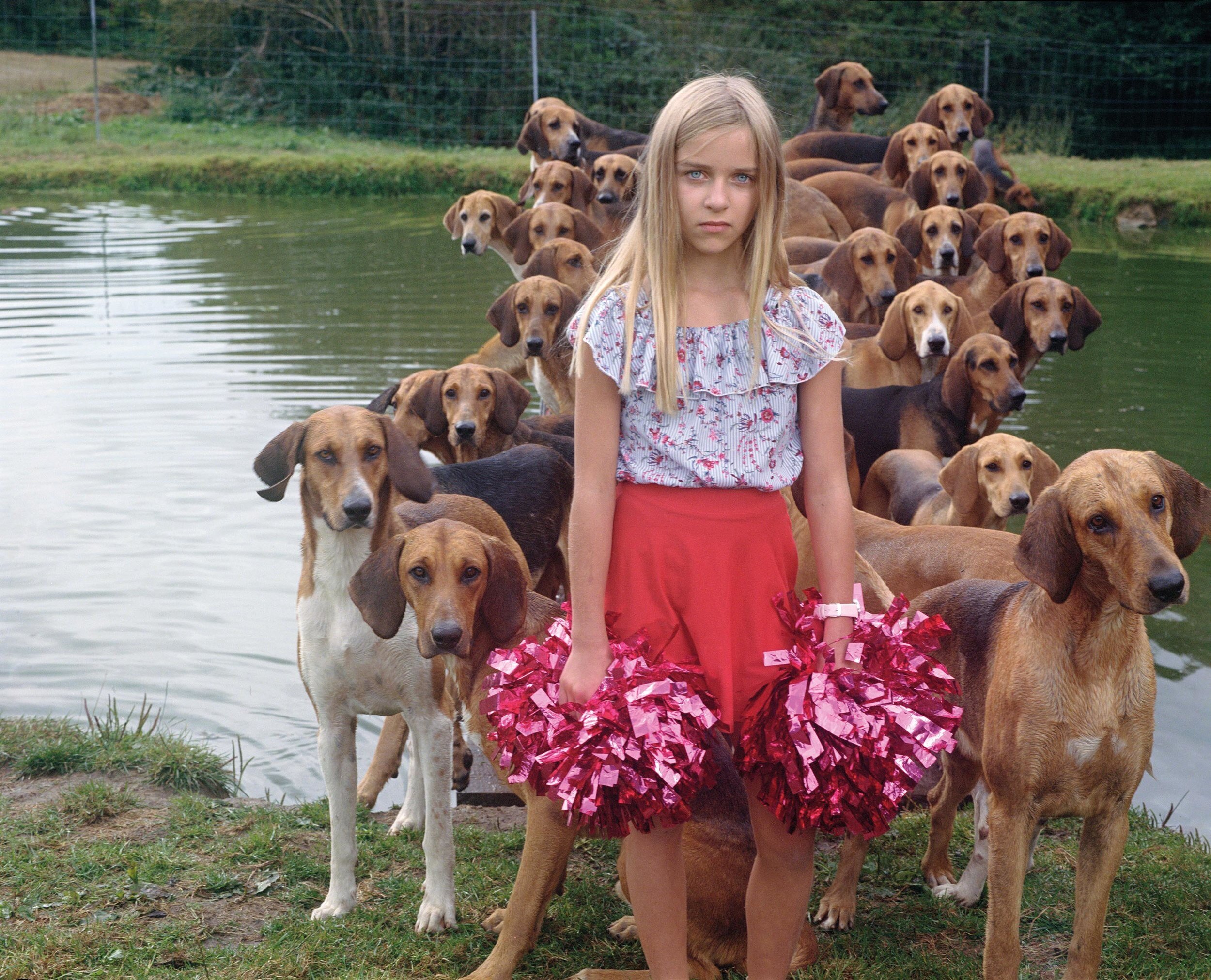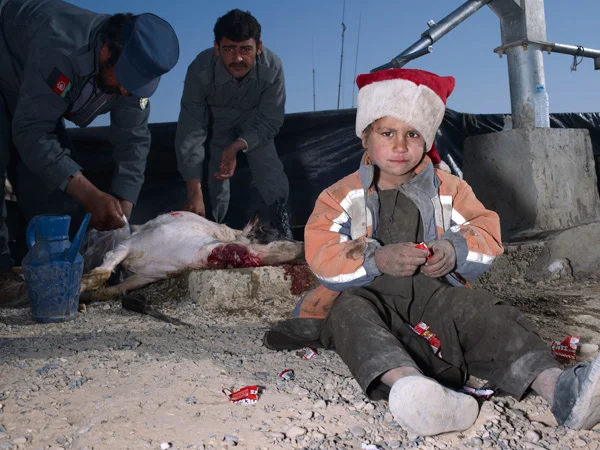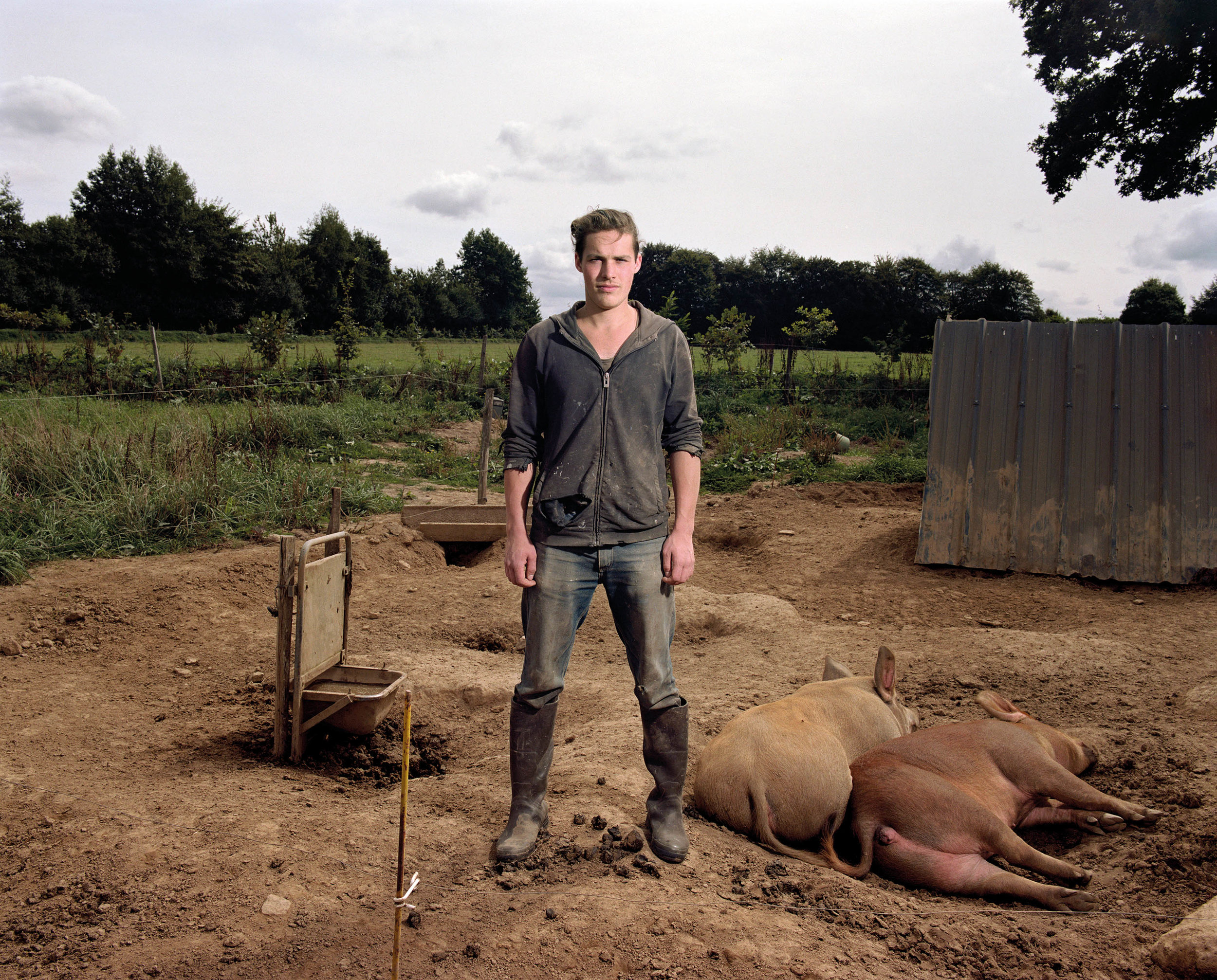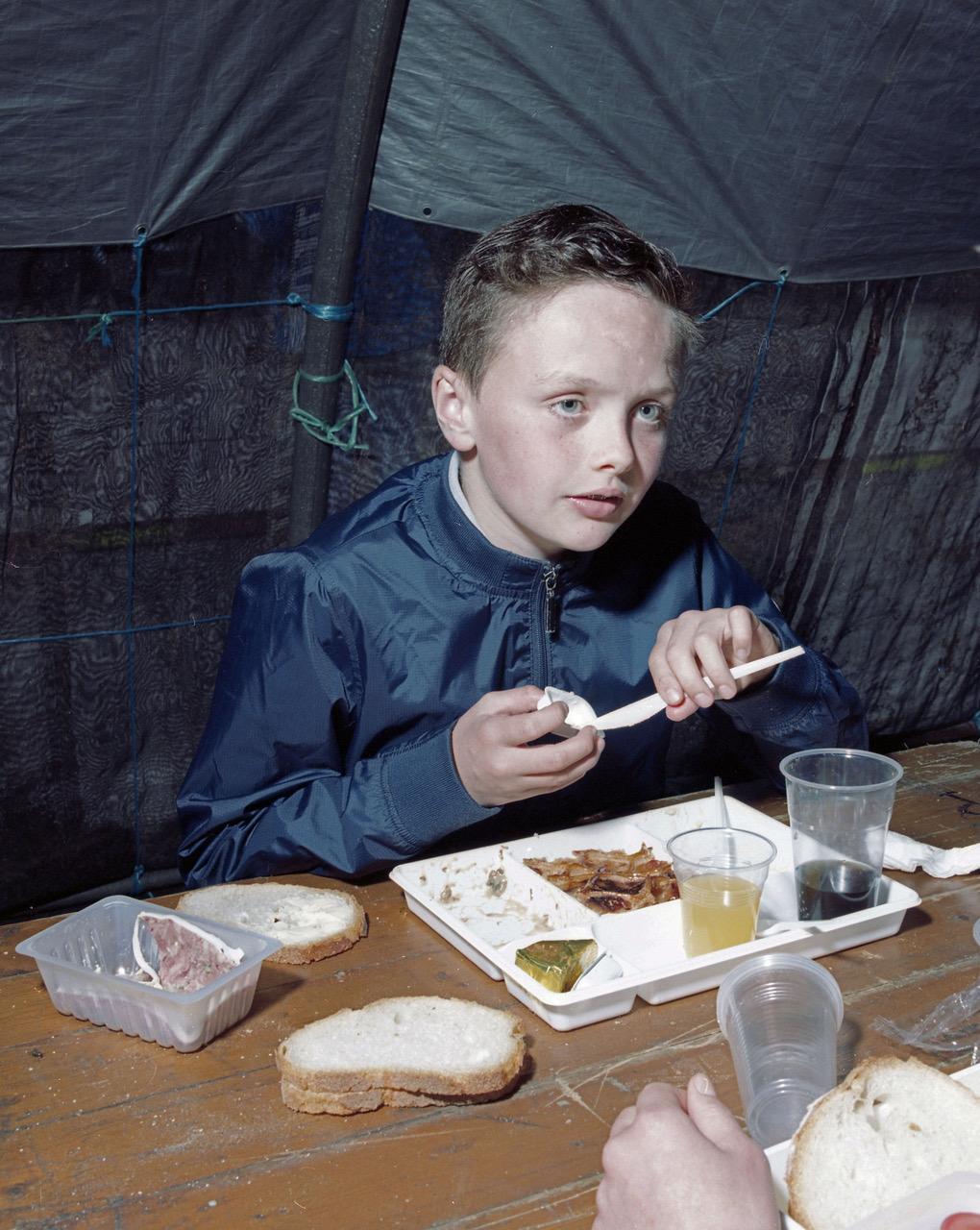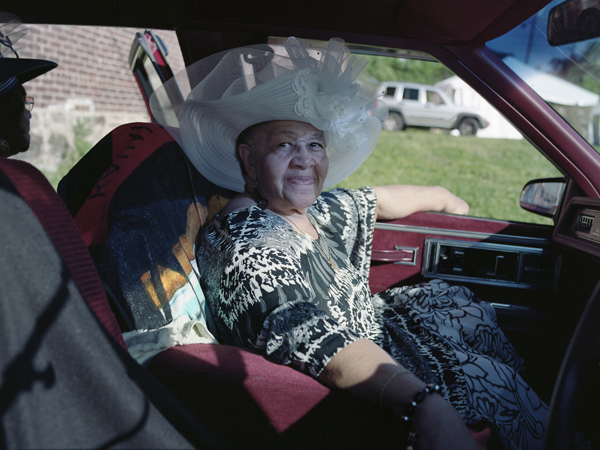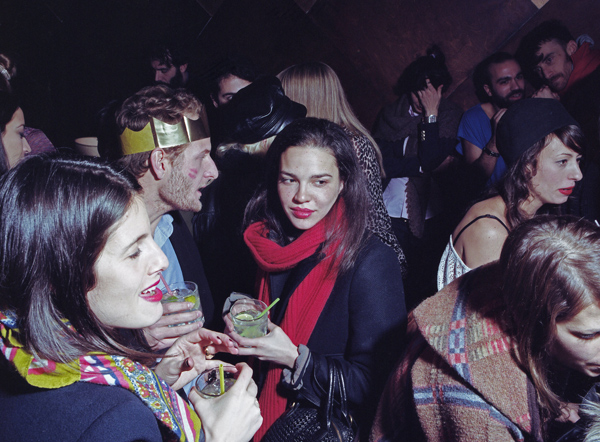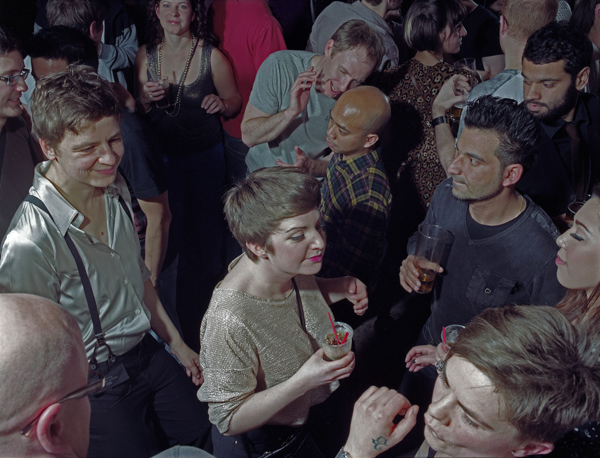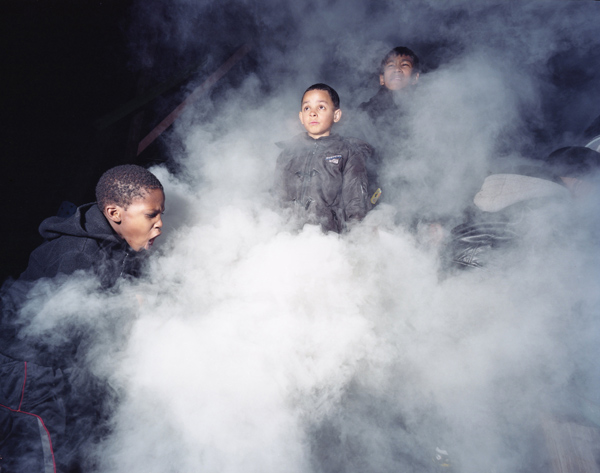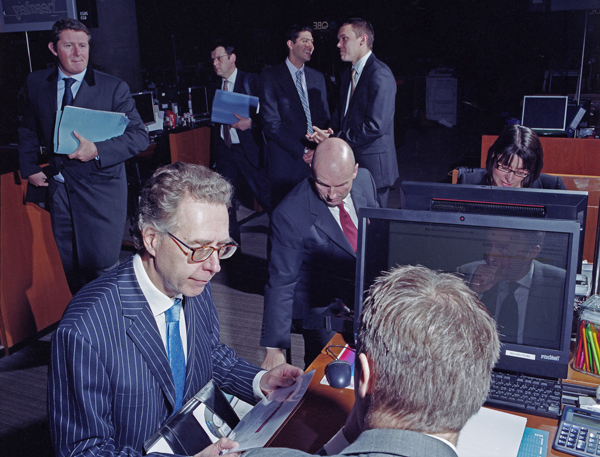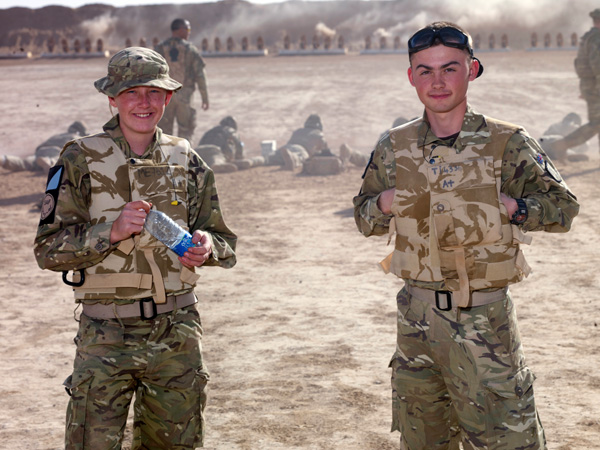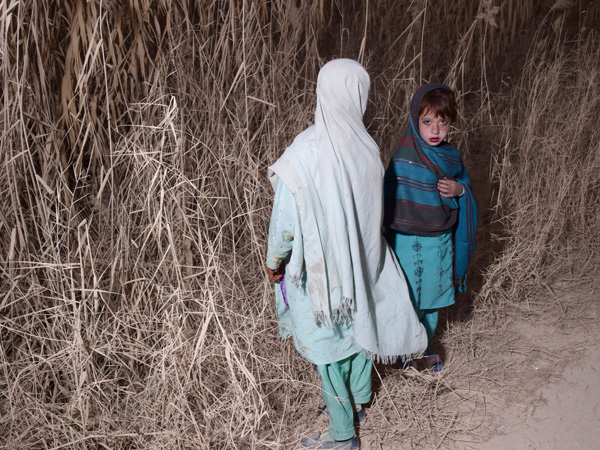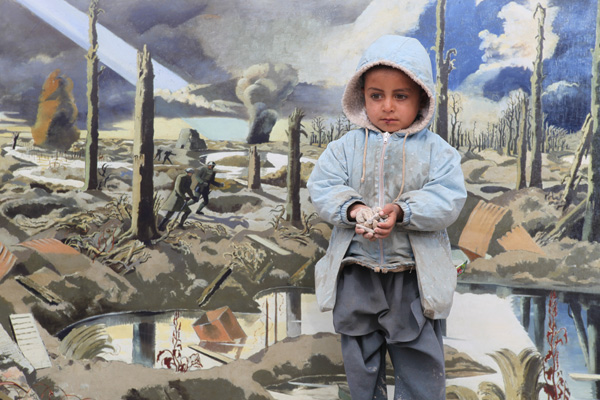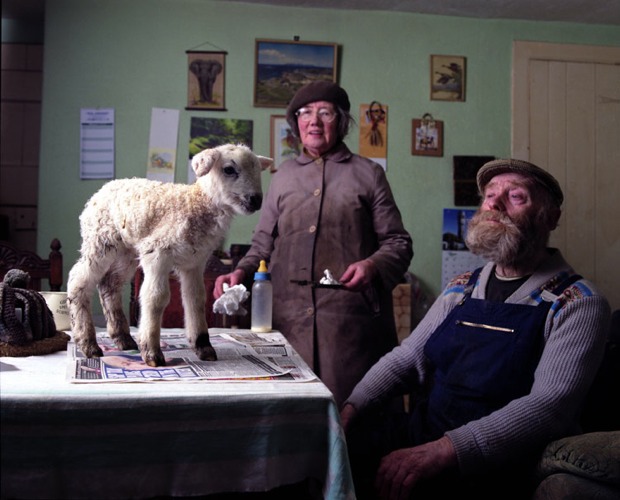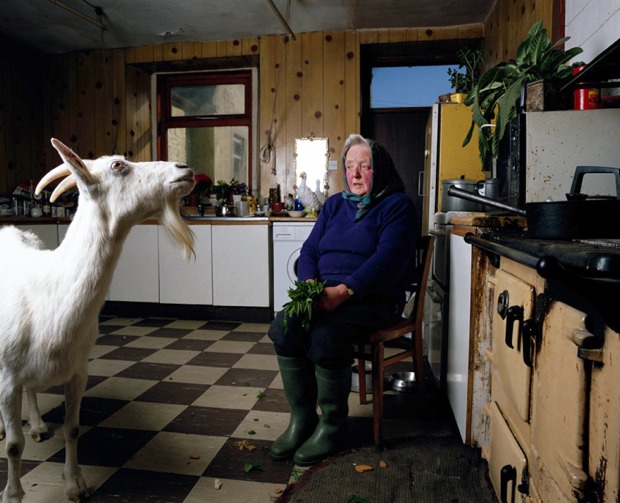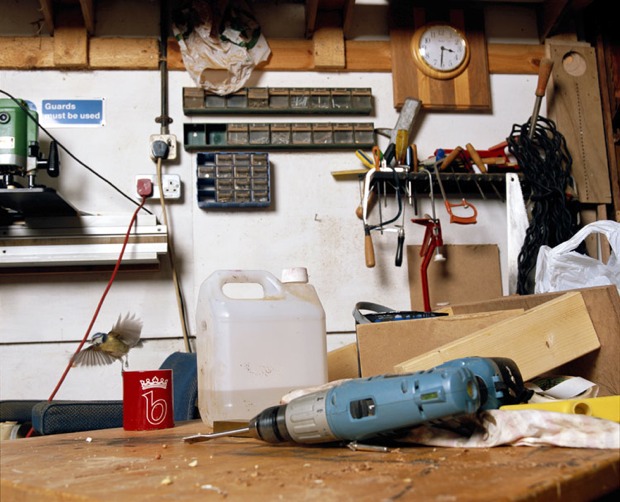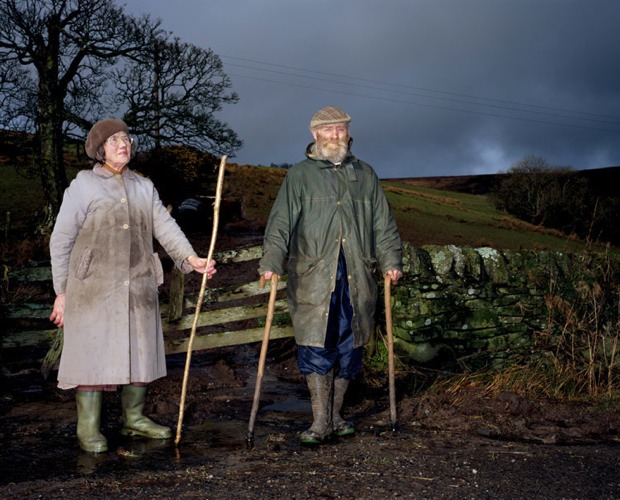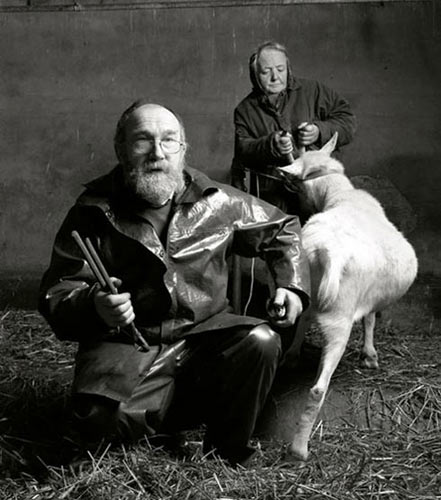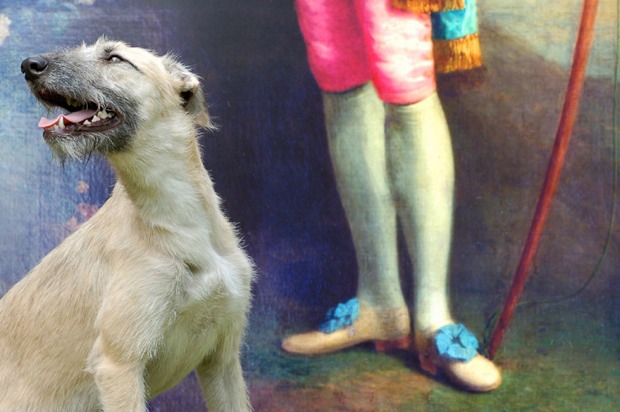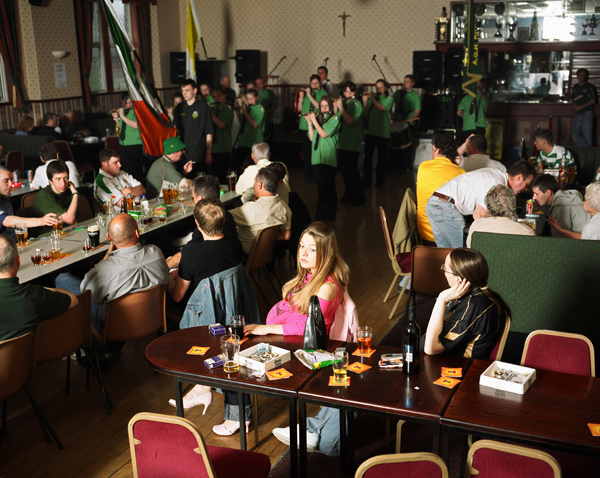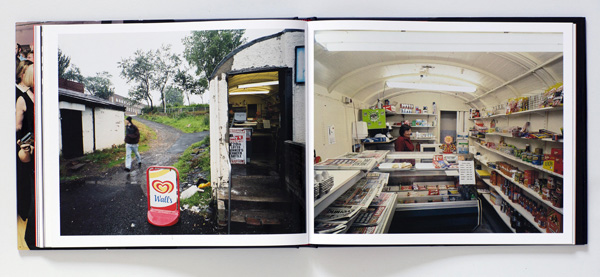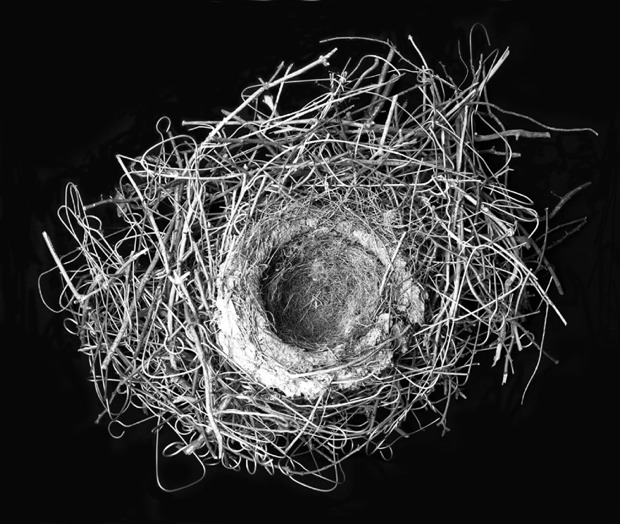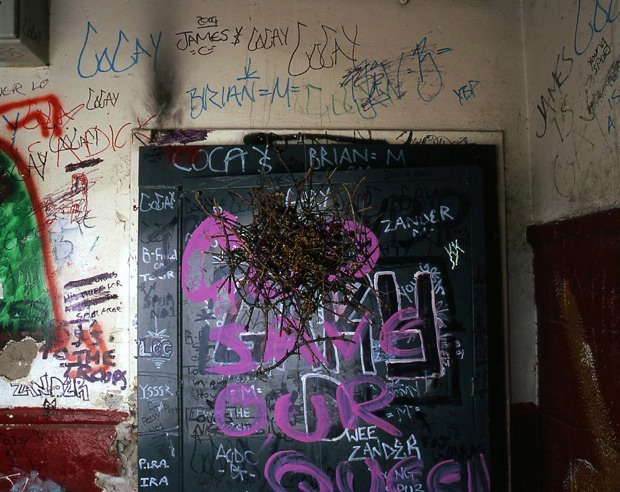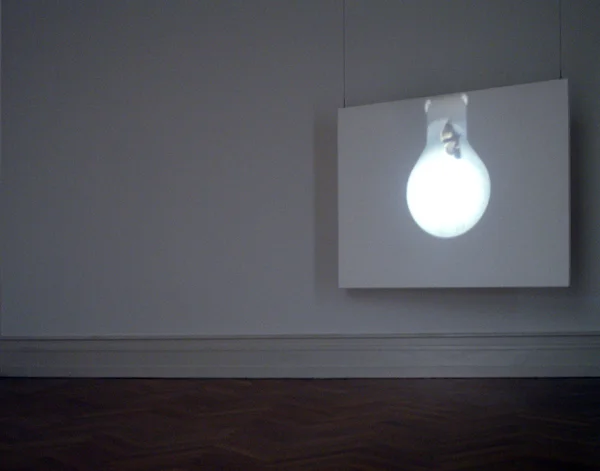2004-2006
Book production and unique dissemination as a public artwork, 2004/2005
Photographs, text, and audio, later forming a gallery installation in 2006
As shown in Modern Art Oxford, and Dick Institute, Kilmarnock. Elements from the Project were later exhibited in ‘Parrworld’ at Haus Der Kunst, Munich, Jeu de Paume, Paris, and Baltic Mill, between 2008-2010.
In 2004 Neville spent a year as an artist in residence in Port Glasgow, the world centre for shipbuilding fifty years ago, now a town facing an industrial and economic decline. The result of this stay was a beautifully produced coffee table-style book conceived as a symbolic gift to the community. The book was uniquely delivered, free, to the eight thousand households in the Port by the members of the local Boys Football Club. In this way, rather than having a public artwork imposed upon them, the Portonians received a document of their lives and of their participation as both the hosts and protagonists of an artistic experiment. The book is not available anywhere else, commercially or otherwise, in shops or by mail order.
The concept had been to produce and distribute a hardback book of social documentary images, with high-production values, that subverted conventional ways in which such books are disseminated as ‘art’. Neville was fascinated by the way in which the kind of hardback ‘coffee-table’ book of images produced for this project, always ended up on the coffee-tables of the middle class, and not in the homes of those depicted in them. By refusing to sell the book in shops, and by making it uniquely available to Portonians, he was able to intercept and undermine this hierachical, class-based relationship between images and their audience, a relationship that can be viewed as relying on a framework of exploitation. Realising the Port project allowed Neville to examine these questions, and others to do with class, appropriation, the audience, and the context in which social documentary photographs are normally positioned.
The decision to employ the local boys football club to deliver the books had seemed wiser than approaching outside delivery companies ( they all knew the town and its inhabitants already), and conceptually it seemed to fit smoothly into the ethos of feeding both images and funds back into the town. The boys football club delivered all 8000 books in under a week, and without any real problems; the money the club earned paid for both football kit and away games.
The eighty photographs in the book – taken with film cameras and using intricate lighting – range across a variety of photographic styles, bringing together the traditions of social documentary with those of fashion or editorial photography. Collectively they give the impression of something historically indeterminate and suggest that this creative testimony is as much founded in fact as it is a fiction.The rationale behind this was to escape the idea of a unified ‘authentic’ social documentary vision..Neville also employed other devices in order to try to disrupt the notion of a truthful social document, such as employing a fashion designer to make futuristic bonnets for use in some of the photoshoots.
The response to the book by the locals was varied. Many thought that the book was beautiful, an honest reflection of aspects of life in the area, whilst others believed that it showed the community in a negative light, as many of the images were taken in public houses and clubs, and depicted drinking or revelry. In one extreme reaction, the Protestant residents of a street in the Port collectively burned their copies of the book at the back of the local Catholic Club in protest against a perceived pro-Catholic bias in the imagery referencing the respective sides of the secatrian divide. In fact, the balance of images is even.
After the publication of the book, the work was reconfigured into a gallery exhibition which presents the community’s response to the project, including hundreds of letters, e-mails, and newspaper clippings, alongside some of the photographs. This was shown in England at Modern Art Oxford and other venues, and although prints from this exhibition were available for purchase, Neville decided that a considerable proportion of any sales be donated to Port Glasgow based charities. This seemed the only way in which the project and images could visibly enter a debate within the art world, and yet stay true to the ideas of the work. The images now served a purpose of funnelling funds back into the Port, and yet were also balanced in their role as social documentation by co-presenting the responses of that community, both negative and positive, to the very same photographs, and to their contextualisation within a book given uniquely to the town.
The book itself will, however, never be reprinted.
‘The Port Glasgow Book Project was a definite event, which took place in a certain place and time… The important question seems to be; ‘where is the art, exactly, which audience is it meant to speak to, and who owns it?’ Is the art in the quality of the photographs which featured in the book, is it in the book itself as an object, or is it in the contextualisation of the book solely within the Port ?
The work puts equal emphasis on how Neville's images are disseminated, as it does upon their formal quality and content. It attempts to look at issues beyond the frame of the photographic image itself, and how different types and genres of photographic practice align themselves with different demographic boxes.
IN THE PRESS
Martin Parr and Gerry Badger, ‘The Photobook: A History Vol.3’, Phaidon, 2014
Katerine Seda, Art Monthly - April 2006
Neville, Mark, 'The Port Glasgow Book Project', Source , Summer 2006
Neville, Mark, 'Three Ways to Make A Book', Witness Number 3, Winter 2007, edited by Martin Parr
Miller, Mitchell, 'Dialect', Drouth, Spring 2006
Lucy Bannerman, The Herald - 29 Nov 2004
Marie Daly, 'The Port Glasgow Book Project', Metro - 11 Dec 2006
Andrew Nairne, 'Local Stories', Modern Art Oxford - Mar-Apr 2006
Sara Stevenson and Duncan Forbes, 'A Companion Guide to Photography in the National Galleries of Scotland', NGS 2009
Duncan McLaren, 'MAP', Summer 2006
Interview, 'The Art Show', BBC Radio Scotland, 4 Nov 2006 (Mp3)
David Campany, 'Deep Surfaces', Dick Intitute text, August 2006
Martin Vincent, 'Frieze', October 2006

